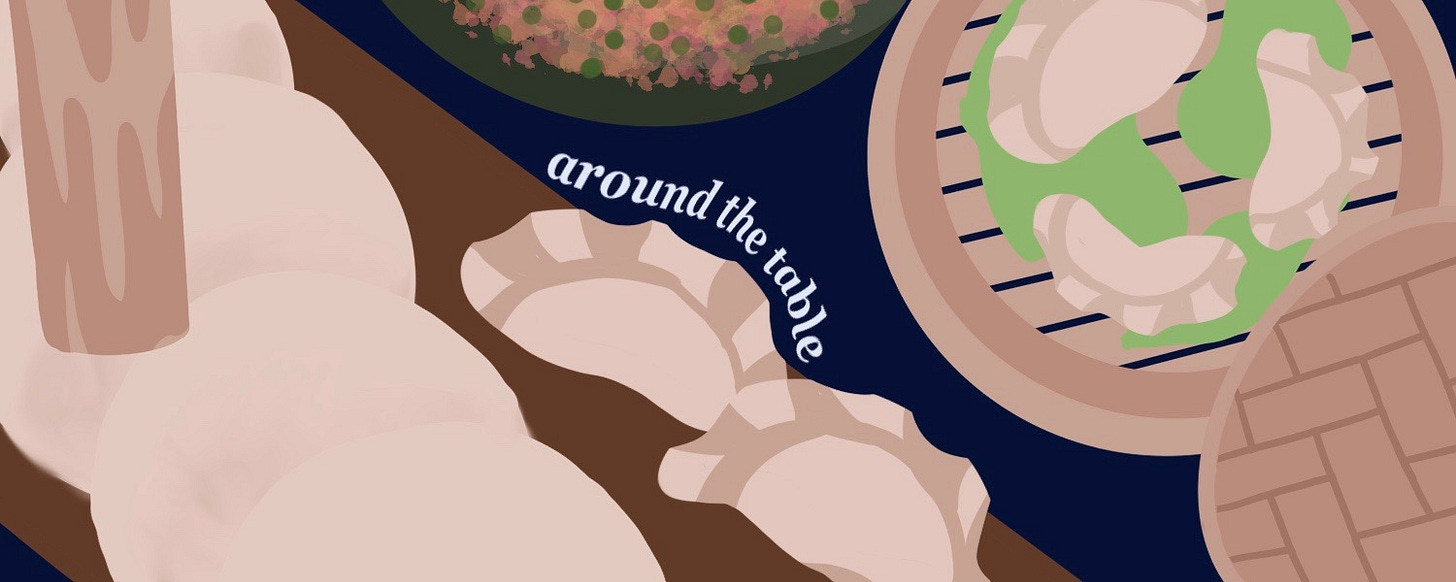Happy belated new year, friends.
We’re not quite back yet with new writing, so we wanted to re-share some of your favorite culture pieces from last year.
At the bottom of the newsletter, you’ll find a table of contents of sorts, so you can go back to the newsletter based on the culture topic. (and a sneak preview of the year to come…)
Love,
Jamie and Melinda
That class called "Human Geo" that I never took
In lieu of our regular programming (ie. those long articles that will return next week), we wanted to break the normal pattern with some demographic data and baseline definitions/statistics. I can nOT stress how badly geography is taught in American public education, and it's good to get a physical understanding of the countries and people that "Asian American & Pacific Islander" encompass. Saddle up, because this will also be our most illustrated newsletter ever. 🐎
What is Asia?
First and foremost, Asia is the largest and most diverse continent. Although conventional use of the term "Asian" is most often used to refer to those closer to the east (at least in the US - apparently "Asian" in the UK more often refers to South Asia), ALL these countries are in Asia: Afghanistan, Armenia, Azerbaijan, Bahrain, Bangladesh, Bhutan, Brunei, Cambodia, China, Georgia, India, Indonesia, Iran, Iraq, Israel, Japan, Jordan, Kazakhstan, Kuwait, Kyrgyzstan, Laos, Lebanon, Malaysia, Maldives, Mongolia, Myanmar (Burma), Nepal, North Korea, Oman, Pakistan, Philippines, Qatar, Russia (parts in Europe and Asia), Saudi Arabia, Singapore, South Korea, Sri Lanka, Syria, Tajikistan, Thailand, Timor-Leste (East Timor), Turkey (parts in Europe and Asia), Turkmenistan, United Arab Emirates (UAE), Uzbekistan, Vietnam, and Yemen.
TIL… Hmong Americans
From the August 19, 2020 edition
When I read that the Asian police officer present at George Floyd's death is Hmong American, I realized I knew nothing about the Hmong population in the United States. Then, while reading chapter 15 of Erika Lee's book Making of Asian America, I finally got a better understanding of their history and their lives today in the United States. And I have to share it! The below is just a short segment of what I learned, and I highly recommend you all look more into it because I won't be able to cover all the details.
The Hmong (pronounced basically as it's spelled it seems) are an ethnic group from Vietnam, Laos, Thailand, Myanmar, and Southern China. The central event that led to their connection to the U.S. was mind-boggling for me: around 1961, at the advent of the Vietnam War, the CIA started recruiting thousands of Hmong people in Laos as part of a secret army in the fight against communist forces in Laos. The Hmong leader, who wanted to protect Hmong from communist domination, struck a deal with the U.S.—it might've included a belief that the U.S. would provide sanctuary in exchange for this service (Lee 318).
AAPI Mental Health
From the September 23, 2020 edition
TW: depression, suicide, traumas affecting mental health
This week, I've had several discussions on the topic of mental health, and it's come to my attention that I know very little about mental health in AAPI communities. Growing up, I never talked about any of this stuff with my parents, and even as I go through struggles of my own, it's rarely a topic of discussion that I have with them (or my Asian American-identifying friends either). "Stress" was the word we used to encompass the entirety of the mental health sphere.
Coming off a conversation about culturally inclusive healthcare today (shoutout to Julci if they ever read this), I wanted to know more about Asian American mental health - the statistics, barriers, challenges, failures, and successes. Below is an initial list of findings. We would love to hear your thoughts if you have any experience in this area!
Quick Stats on AAPI Mental Health
Asian Americans have a 17.3% overall lifetime rate of any psychiatric disorder (Source)
While 18% of all Americans sought mental health services in 2010, only 8.6% of Asian Americans did (Source)
Most Asian Americans prefer to rely on personal relationships rather than professional help for mental health concerns (Source)
Table o’ Contents
Each link to the newsletter with the specified topic!
Sneak Peak of the Upcoming Year
AAPI labor movement participation, Why Pacific Islanders are part of AAPI, AAPI post-election activism, “Towns”, Abortion in AAPI communities, Sex Ed, Senior Care in AAPI communities, and more…
see you soon <3






